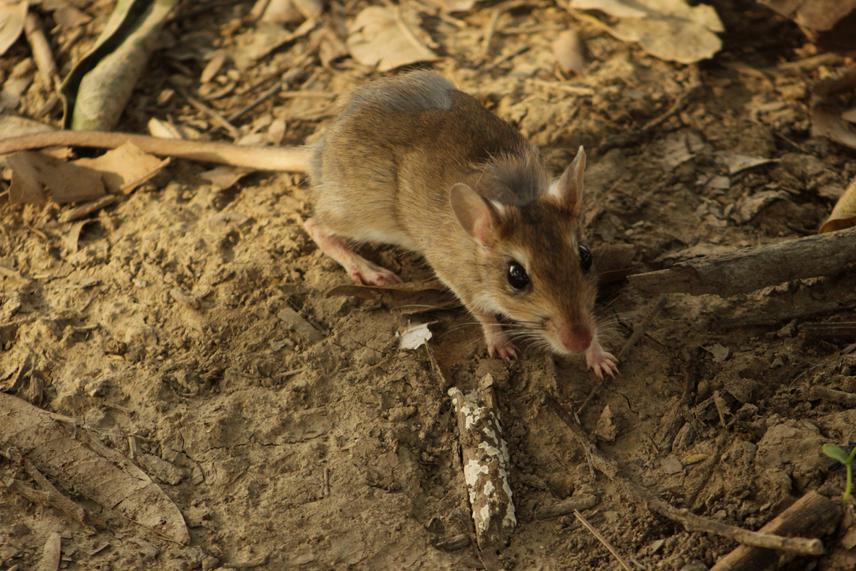Rasmi Kunwar
This project is designated to determine the status of Small mammals (SMs) in Ghodaghodi Lake Complex (GLC) since information on SMs status from the GLC is poorly known and also it will initiate community based conservation program to address immediate threats in GLC. This project will help to establish baseline on SMs occupancy, distribution, abundance and threats which will be based on well accepted ecological methods. Baseline data is indispensible for conservation program. So, this study is believed to be established as milestone in SMs conservation in GLC, and the learning could be replicated elsewhere. Community’s involvement is crucial for the success of any conservation intervention. Therefore, this project targets to maximize the impact of this work through local people’s engagement involving Forest User Groups (FUGs). Awareness building and capacity enhancement will be the fundamental approach to ensure their active participation.

Indian gerbil.
Although Small Mammals (SMs) comprises of more than half of total mammal species in Nepal, it is still among the least concerned taxa. The Ghodaghodi Lake Complex (GLC) being a significant Ramsar site, is less explored regarding small mammals. It is important not to underestimate the worth of the species in this SM group as they can often be indicators of ecosystem health, prey species and part of ecosystem function such as seed dispersal.
This research will be carried out in order to establish baseline on SMs occurrence, distribution, abundance and anthropogenic threats in GLC. Grids of 500mx500m will be overlaid in the identified potential sites and 25% of total grids will be selected randomly. The extensive field survey will basically involve transect survey; camera/live-removal trapping, roost survey (caves, old houses, tree hollows etc.), direct-sightings and indirect signs; quadrat sampling and questionnaire survey along with focus group discussions (social surveys). Discussions incorporating the anthropogenic threats and their impact intensities in SMs will be done with key informants. With the help of QGIS, the sampling design and spatial distribution map of small mammals in the GLC will be made. Importance Value Index will be considered for determining the dominancy of the vegetation associated with small mammal species. Furthermore, this project will raise conservation awareness throughout the community of the project area. For this, different groups of people of the project area e.g. fishermen, farmers, poachers, school students, women groups and Forest User Groups (FUGs) members will be sensitized on SMs’ conservation issues and values through sensitization workshops, posters, printed and electronic media. This community based SM conservation initiative will build up community stewardship through their active participation throughout this project, where the selected local people (n=10) will be trained as citizen scientists, and involved in monitoring SMs. Youth in nature conservation campaign through school outreach activities will be organized.
This project will encourage local forums working for the conservation of GLC and government agencies for formulating better conservation and sustainable management strategies for conserving biodiversity. Local people will know the importance of SMs in ecosystem maintenance. Community based conservation awareness will reduce the influential stress on SMs habitats and also lessen the incidence of SMs hunting/ poaching which could help to maintain SMs population.